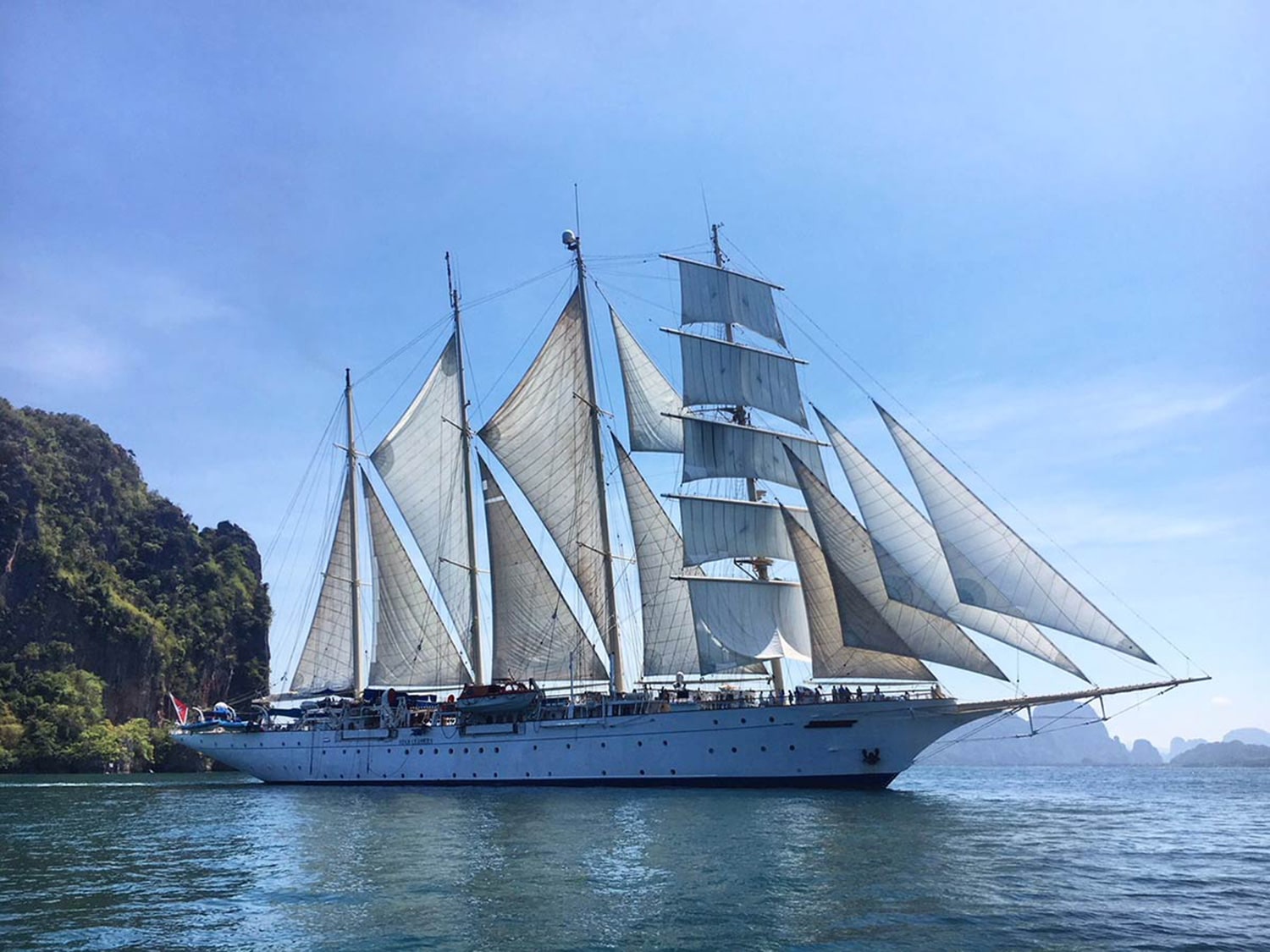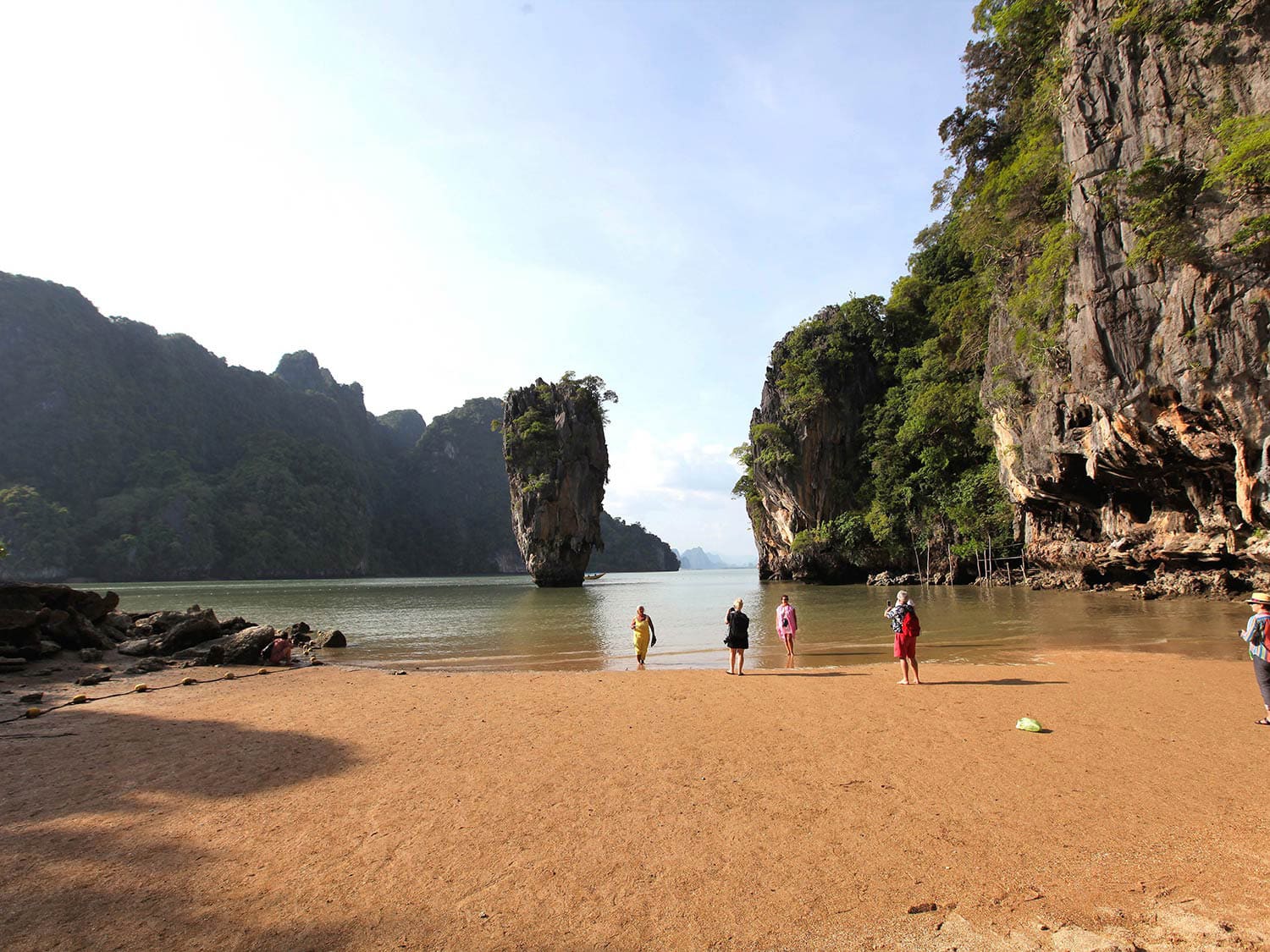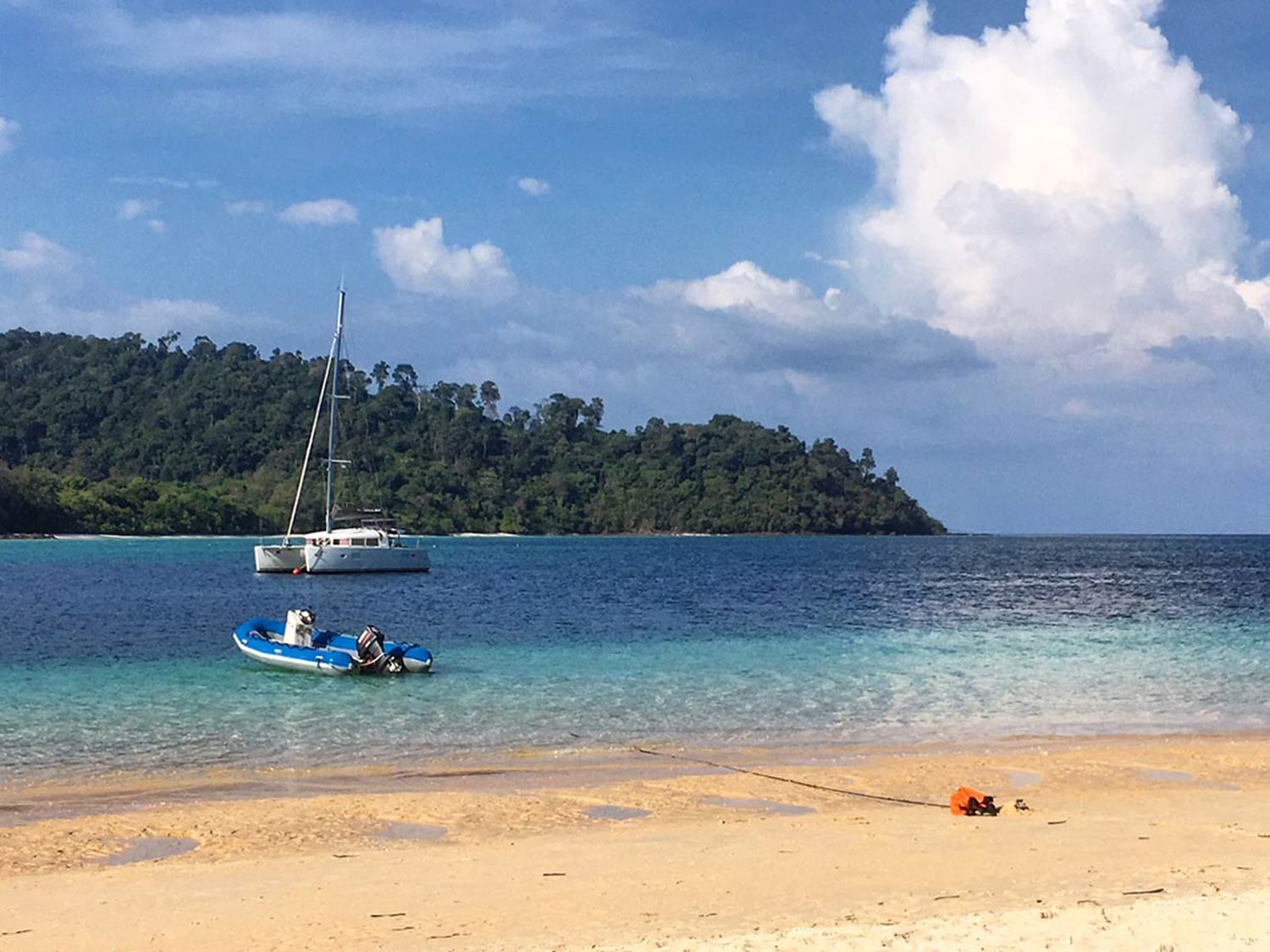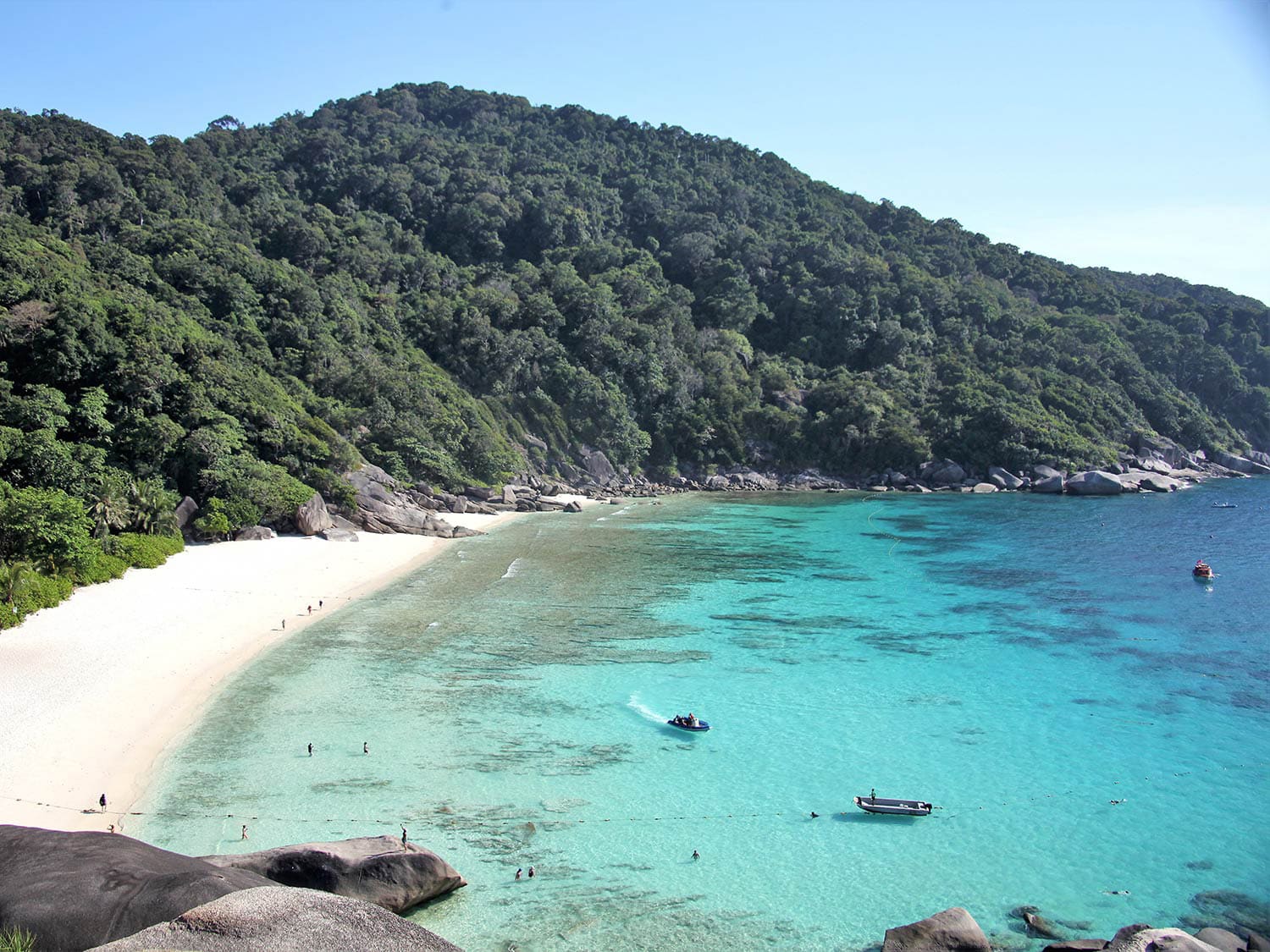Exploring Thailand's Remote Islands By Tall Ship
Amid troubling, tourism-related beach closures in Southeast Asia, an intimate tall ship takes passengers to remote reaches of Thailand, where islands remain unspoiled.
Gmail finishes loading after what feels like forever, and a new message with a grim subject line appears at the top of my inbox. "Trouble in Paradise: Tourism surge lashes Southeast Asia's beaches," it reads. The email contains a news report detailing the temporary closure of Filipino, Indonesian and Thai beaches suffering under a crush of tourism.
Arguably the most notable among them is Maya Bay, on Thailand's Ko Phi Phi Leh island, a golden crescent of sand surrounded by limestone cliffs and kissed by the warm, impossibly blue waters of the Andaman Sea. If you've seen The Beach, the 2000 film adaptation of Alex Garland's novel, starring Leonardo DiCaprio, then you know it. After playing the movie's titular role almost 20 years ago, it became a wildly popular tourist attraction that has since received an average of 4,000 visitors a day. The astonishing volume has devastated the cove's delicate coral reefs. Its shoreline is choked by boats.

The irony isn't lost on me. Reason being—and the cause of my sluggish cell service—is that, as I read, I'm sprawled on a patch of cool, silky sand in the dappled shade of a driftwood tree on Ko Rok Nok, a sleepy island roughly 40 miles southeast of the beleaguered Maya Bay. Looking up from my screen, I stare out. First, at the nearly empty sliver of shoreline before me, then to the narrow channel of cerulean surf just beyond, and finally to the small, wooded island of Ko Rok Yai on the other side. I struggle to imagine a beach in Thailand that looks anything unlike this one—pristine and practically all mine.
Mercifully, not all of Thailand's islands' beaches are suffering the same maladies as Maya Bay. In fact, plenty of still-idyllic islands in the Andaman Sea, Ko Rok Nok included, are ripe for exploring. You just have to know how to get there.

Along with plain good fortune, what's brought me to Ko Rok Nok is the Star Clipper, a 360-foot-long tall ship with four masts, 16 billowing sails and space for just 170 guests. The ship is my home for seven days as it loops around the Andaman Sea, starting and ending its journey in Phuket and dropping anchor just off shore from a handful of small islands in between.
After pushing off from Phuket, a pattern emerges: Sail at night, and awake in the morning to sneak a peek at a new island paradise through my cabin's porthole. For several hours each day, Star Clipper's blaze-orange tenders, manned by crew members in white sailor suits, shuttle my shipmates and me back and forth from ship to shore.

While on Ko Rok Nok—part of both the Lanta islands and a national marine park—the narrow channel that separates it from Ko Rok Yai is a play place for snorkeling, kayaking, and, for those of us willing to brave the stiff breeze, standup paddle boarding. To mitigate the Thai sun's intense heat, a deeply tanned, towheaded crew member who's all of 19 or 20 plunks a cooler onto a shaded mound of sand, takes a seat on a piece of driftwood, and readies himself to play bartender.
During an overcast day on Ko Adang, there are more water sports, along with a beach barbecue and, for some off-duty crew, a pickup soccer game. Their bare feet make cheerful slapping sounds on the wet, shiny sand. Part of the Butang archipelago, Ko Adang is among the southernmost islands on Thailand's western coast. It lies just a stone's throw from the border of Malaysia—and blissfully far from most tourists' radar.

Coincidentally, one of the last stops on our weeklong sailing, Ko Similan is also the most highly anticipated. In the days leading up to our arrival, James MacIntyre, the Star Clipper's resident master dive instructor, has issued ample reminders that it will offer the most spectacular diving and snorkeling of our entire island-hopping adventure. And how! A dip below the surface of the shallow, crystal-clear water reveals a whole new tableau teeming with life: sharks, barracudas, clown and triggerfish, and the colorful coral reefs where they all make their homes. It's unlikely you'll have the island to yourself, but these are riches you'll be happy to share.
Access to these far-flung, still-unspoiled islands is arguably the biggest perk of traveling by tall ship, but it's certainly not the only one. There's plenty to enjoy onboard too, from readings and lectures to Thai dancing and talent shows. One can't-miss opportunity is a sunset climb to the crow's nest, where see-forever views include the sea, sky, and, delightfully, absolutely nothing else.
